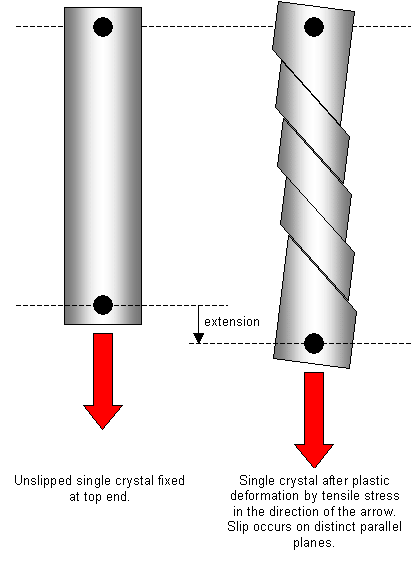Introduction
When a single crystal is deformed under a tensile stress, it is observed that plastic deformation occurs by slip on well-defined parallel crystal planes. Sections of the crystal slide relative to one another, changing the geometry of the sample as shown in the diagram.

By observing slip on a number of specimens of the same material, it is possible to determine that slip always occurs on a particular set of crystallographic planes, known as slip planes. In addition, slip always takes place along a consistent set of directions within these planes – these are called slip directions. The combination of slip plane and slip direction together makes up a slip system. Slip systems are usually specified using the Miller index notation. For example, cubic close-packed metals slip on <1 bar1 0>{111}: that is, in directions related to [1 bar1 0] by symmetry and on planes related to (111) by symmetry. The slip direction must lie in the slip plane.
Generally, one set of crystallographically equivalent slip systems dominates the plastic deformation of a given material. However, other slip systems might operate at high temperature or under high applied stress. The crystal structure and the nature of the interatomic bonding determine the slip systems that operate in a material.

